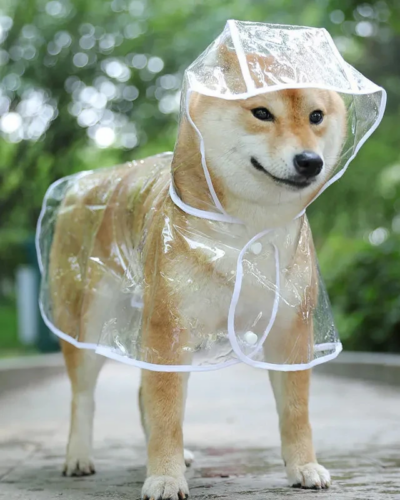Free delivery for orders over £45

Top 10 Tips for Training Your New Puppy
Table of Contents
Puppy training tips are crucial to developing well-mannered dogs. Starting young ensures they acquire key skills in obedience and socialisation. Understanding your puppy’s behaviour helps tailor your training approach, making the process smoother. Consistent practice, combined with positive reinforcement, creates a strong bond between you and your pet. Equipping yourself with effective strategies will result in a happy, obedient puppy ready to learn more advanced commands. Let’s delve into essential steps for successful puppy training, focusing on behaviour understanding and consistent routines.
Understanding Your Puppy’s Behaviour
Understanding your puppy’s behaviour is crucial when embarking on the journey of training. Puppies, like human children, are curious and eager to learn. Observing their actions and reactions helps in gauging their moods and understanding their needs.
One may notice that puppies display excitement through wagging their tails, barking playfully, or bouncing around. These are signs of a happy and engaged puppy, ready to participate in training activities. Conversely, a puppy that tucks its tail or avoids making eye contact might be feeling anxious or scared. Recognising these signs allows you to adapt your training methods to suit their comfort level.
During training sessions, patience is vital. Puppies have short attention spans and require breaks. Positive reinforcement, in the form of treats or verbal praise, can encourage desirable behaviours. Consistency is key, so ensure you use the same commands and rewards to avoid confusing your puppy. This creates a predictable environment, which is conducive to learning.
Interacting with your puppy daily helps to strengthen your bond. This bond is important as puppies are more likely to respond positively to those whom they trust. Engage in playtime and incorporate training into these sessions to make learning fun. Remember, a puppy’s behaviour is a language, and learning to interpret it is an invaluable skill in their training journey.
Essential Commands Every Puppy Should Learn
Teaching essential commands is a fundamental part of training. Establishing a foundation with essential commands helps develop a well-behaved puppy. The process starts with the basics and gradually builds up to more complex instructions.
Sit is one of the first commands most trainers focus on. It’s simple yet incredibly useful. Begin by holding a treat close to your puppy’s nose and slowly move your hand upwards, encouraging their back end to lower. Reward them immediately.
Next, Stay helps calm excited puppies. Once they’ve mastered ‘Sit’, raise your hand in front of them while saying ‘Stay’. Move back a few steps, and if they hold the position, reward them lavishly. Gradually increase the distance.
Come is crucial for keeping your puppy safe, especially outdoors. Start in a low-distraction area. Crouch down, gently say ‘Come’, and use an encouraging tone. Reward them as soon as they respond positively.
The command Down is useful for keeping your puppy from jumping on people. With a treat in your hand, move it to the ground while saying ‘Down’. Encourage them to follow the treat and reward them once they lie down.
Teaching Leave it protects your curious puppy. Start with a treat in your closed hand. Let the puppy investigate and once they stop trying to get it, say ‘Leave it’ and reward with a different treat from the other hand.
Finally, add the command Drop it to manage their inevitable love for chewing inappropriate objects. Offer a treat in exchange for what they have, say ‘Drop it’, and reward as soon as they comply.
Incorporating play sessions between these training steps keeps your puppy engaged and motivated. Persistence and regular practice help reinforce these commands. With time, patience, and consistency, your puppy will respond well to these essential commands, paving the way for a harmonious relationship.
Effective Reward Systems in Puppy Training
Creating an effective reward system is crucial in training your puppy. Rewards can range from treats and praise to playtime and affection. The key is consistency and timing. Aim to reward your puppy immediately after they perform the desired behaviour, reinforcing the association between the action and the reward.
Positive reinforcement is widely regarded as the best approach. When using treats, opt for healthy options, and keep them small to prevent overeating. Praise should be enthusiastic but not overwhelming. Your tone of voice needs to convey positivity and encouragement.
In addition to treats and praise, find out what else motivates your puppy. For some, a few minutes of play with a favourite toy might be the best reward. Watch your puppy’s reactions to determine what they enjoy the most. Sometimes, simple affection like a pet or a cuddle can be highly effective.
Make sure to tailor the rewards to different situations. For instance, a simple “good dog” might suffice for regular tasks, but learning a new command could require a more enticing treat. Gradually, you may use rewards less frequently, but always acknowledge good behaviour with praise.
Lastly, avoid using punishment as it can lead to fear and anxiety in puppies. Instead, focus on redirecting unwanted behaviour and rewarding the correct actions. This builds a positive learning environment and fosters a strong bond between you and your puppy.
Overcoming Common Puppy Training Challenges
Puppy training can feel daunting, yet overcoming usual difficulties is quite achievable with patience and understanding. Puppies tend to be energetic and curious, which often leads to challenges such as persistent biting, excessive barking, and house accidents. To manage these, it is essential to establish clear boundaries and stay consistent with your commands.
One common issue is potty training. Establishing a regular toilet schedule helps to avoid accidents in the house. Take your puppy out frequently, especially after eating or drinking, and always praise them when they go outside. This builds a positive association with the behaviour you wish to encourage.
Another challenge is nipping and biting during play. Puppies explore the world with their mouths, so it’s important to teach them the difference between toy and human skin. Redirect their biting to toys and respond with a firm ‘no’ to discourage biting.
Excessive barking is also common. Puppies bark to communicate or out of boredom. Provide plenty of physical and mental stimulation to keep them occupied. Socialisation helps them become accustomed to different environments, reducing anxiety-based barking.
Consistency
Ensuring that everyone involved in the puppy’s life uses the same commands and response methods is crucial. Mixed messages can confuse your puppy and make training more difficult.
Training a puppy requires patience and adjustments, but with perseverance and the right techniques, these common obstacles can be successfully overcome.
The Importance of Consistency in Training
Emphasising the importance of consistency when training your puppy cannot be overstated. Regular training sessions help establish clear communication and set expectations, which can prevent confusion and behavioural issues. Consistency means sticking to the same commands, signals, and rewards to help your puppy learn effectively.
Every time you interact with your puppy, it’s an opportunity to reinforce their learning. Practice commands in different settings and make sure all family members use the same instructions to avoid mixed messages. This ensures your puppy understands what is expected of them, no matter who is giving the command.
Establish a regular schedule for feeding, toilet breaks, and training sessions. Puppies thrive on routine, and knowing what comes next can make them more cooperative during training. Consistent training times also help your puppy remain focused and eager to learn, as they become familiar with the learning process and understand that it’s a part of their daily routine.
Keep Your Training Short but Frequent
Puppies have short attention spans, so it’s crucial to keep training sessions brief but frequent. Several short sessions throughout the day can be more effective than a long, drawn-out session. During training, maintain a positive tone and always reward good behaviour promptly to reinforce what they have learned.
Incorporate training into daily activities. For instance, practice the ‘sit’ command before feeding or a ‘stay’ command when in the park. This not only reinforces their training in real-life scenarios but also makes it a part of their everyday life, ensuring consistency in learning.
Patience and persistence are crucial. Puppies will not master commands overnight, and some days will be more successful than others. Stay consistent with your expectations and remember that setbacks are natural. Over time, this consistency will lead to a well-trained, well-adjusted puppy who understands his place within the household.
Socialising Your Puppy with Other Dogs
It’s crucial to ensure that your puppy feels comfortable and safe around other dogs. This can help prevent behavioural issues and promote a friendly disposition. Start by introducing your puppy to calm and well-behaved dogs. Observe the interactions carefully. Puppies learn a lot from observing and mimicking the behaviour of older dogs.
Make sure these introduction sessions are short and always supervised. Puppies can be overwhelmed easily and need time to adjust. Keep a close eye on their body language; signs of fear or aggression should be addressed gently and promptly. Encourage positive interactions with treats and praise when your puppy displays good manners.
Sensitivity is key—each puppy reacts differently based on past experiences and temperament. If they appear scared or anxious, create a comfortable distance between them and the other dog. This allows them to calm down before attempting the interaction again.
Consider organising playdates in a secure environment. Public parks with designated areas for dogs can be ideal, provided your puppy is vaccinated and protected. This allows them to explore playful interactions under your watchful eye, gradually building their confidence.
Remember, the goal is a positive and rewarding experience for your puppy, setting a foundation of friendliness and sociability that can last a lifetime.
Choosing the Right Training Tools
Selecting the appropriate training tools can significantly influence the success of your puppy’s education. Leads and harnesses are essential for safe outdoor training sessions. A comfortable lead and harness help in guiding your puppy without causing discomfort. Opt for adjustable harnesses that grow with your puppy.
Consider using clickers for precise marking of desired behaviours. Clicker training is an effective method where a distinct sound signals to the puppy that they’ve done something right. This approach can speed up the learning process when paired with treats.
Incorporate treat pouches or bags to keep hands free and rewards handy. It ensures a prompt and timely reward delivery essential for reinforcing positive behaviour.
Not to forget, interactive toys play a vital role, keeping your puppy engaged while fostering problem-solving skills. Choose toys that encourage independent play, which can be useful when introducing your puppy to new environments.
Training mats are also helpful tools for creating designated areas for potty training or rest time. These areas serve as a secure spot, helping puppies associate specific locations with certain activities.
Always bear in mind, the tools you choose should be safe, non-toxic, and suitable for your puppy’s age and size. Quality matters over quantity, ensuring a positive and effective training experience.
-
Dry Fast
£10.00Original price was: £10.00.£8.00Current price is: £8.00.
Contact Us
- +44 07391626201
- info@promotepet.com
- 16, Cromwell Close - Oxford - UK
COPYRIGHT © PROMOTE PET. ALL RIGHTS RESERVED. © 2024 Chofard Enterprise Ltd. Chofard Enterprise is a company registered in England and Wales with a company number 13073779 VAT number GB 370644889. 16, Cromwell Close, Oxford OX30RW, United Kingdom – trading as Promote Pet Online Shop.











